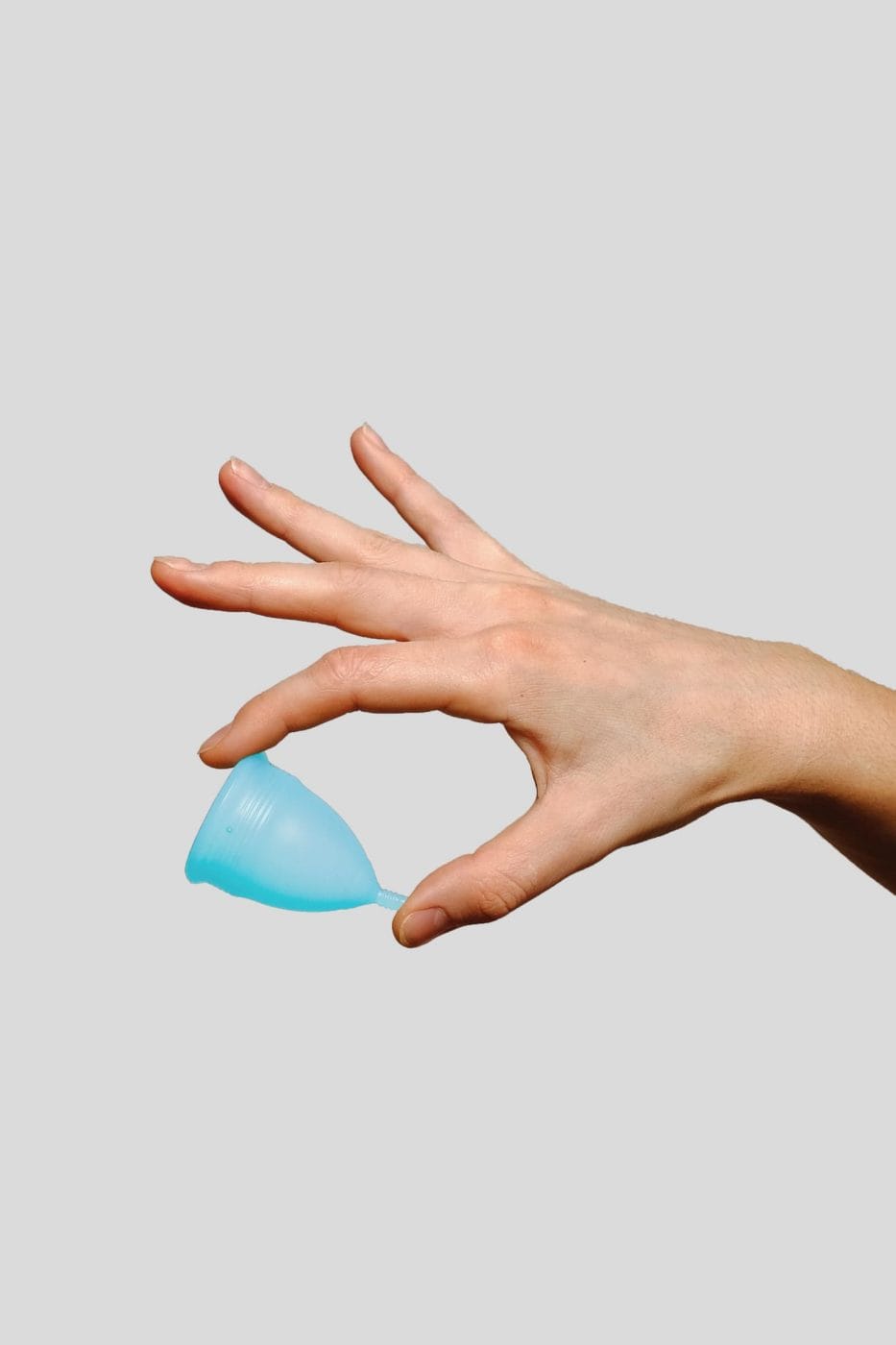I’m a menstrual cup convert and here’s why you could be too

MeLuna
I traded in tampons four years ago and have never looked back.
We independently select and share the products we love—and may receive a commission if you choose to buy.
Table of Contents
- Menstrual cups are so much cheaper than tampons.
- They're better for your vagina than tampons.
- This leads me to: You can leave a period cup in longer than tampons.
- You can, ahem, kinda sorta still get it on while you've got one in.
- Cups are far better for the environment.
- You only need one for your entire cycle.
- The only drawback? There's a learning curve.
If you told me a few years ago that I’d be someone who not only uses a menstrual cup but also writes about her love for it on the internet, I’d say you were sorely mistaken. But here we are.
Let me explain.
Back in 2017, I was a dedicated tampon user. Specifically, the applicator-free O.B. kind. Call me adventurous, but the truth is, I just hated all the extra trash that the applicators created. However, for several months in a row, they became hard to come by. As I stood in front of Rite Aid’s feminine product buffet, I spotted The Diva Cup and my interest was piqued.
Of course, as a Vermonter, I had plenty of (hippie at heart) friends who’d used them for years so the idea wasn’t totally foreign. It just wasn’t something I was all that keen on trying for myself, likely due to an unfortunate teenage experience with the similar Soft Cups. (Let’s just say, it was momentarily beyond reach and I was not calm about it.) But faced with all the options laid out in front of me, I decided to lean into my adventurous side and carried my new silicone pal to the self-checkout.
I’m not going to lie. The first time I used it, I was anxious. Sure, I’d pushed two whole people out of my vagina, but for the same reason it should be easy to insert, wouldn’t that also make it easy for it to rocket itself all the way up to my sternum? (I’m not a doctor, but that somehow seems plausible.) With as much calm as I could muster, I followed the instructions to pinch the top closed and tipped it in and up. And to my surprise, that was that. A few jumping jacks and a squat or two to be sure, but it felt like nothing. Huh. Who’d have thought?
Related: Can you get pregnant on your period?
In the years since I’ve purchased one box of tampons in an emergency but have otherwise never looked back. I’m a proud period cup convert and compiled a list of reasons you could be too.
Menstrual cups are so much cheaper than tampons.
At an average cost of $30, it definitely looks spendy next to those $7.99 boxes of tampons. However, cups can last up to ten years—do the math and you’ve saved at least $1,000. I’ve purchased two, but only because I accidentally left one behind in a hotel bathroom. (I’m very sorry to the cleaning staff.)
They’re better for your vagina than tampons.
Diana Spalding, MSN, CNM, says that there are some potential safety benefits to using a menstrual cup rather than tampons. “Tampon usage increases the risk of toxic shock syndrome, which can happen if a tampon is left in too long. There are also concerns about whether the body absorbs chemicals present in tampons.” Menstrual cups can alleviate some of these risks, though Spalding shares that they are not risk-free (nothing is). You can still get an infection if you leave it in too long, and if they are not well-fitted to your body, they can cause irritation.” Personally, I’ve found my body is much better suited to the non-absorbent silicone than a wad of cotton. Since I switched I’ve had no yeast infections, no imbalances, nothing.
This leads me to: You can leave a period cup in longer than tampons.
As any mom can attest, some days it’s a challenge to find five minutes alone to pee—let alone change a tampon. Conveniently, cups can be left in for up to 12 hours versus a tampon’s 8-hour time limit. Full disclosure, I’ve definitely forgotten about mine and left it in for 24 hours. While I don’t recommend that at all, I didn’t suffer any adverse effects for my mistake.
You can, ahem, kinda sorta still get it on while you’ve got one in.
Perhaps not your chief concern, but worth noting if it is. Penetrative sex isn’t really possible, but getting frisky in all the other ways works. Sure, the hope is that we’d be comfortable enough with our partners to work around a string, but no thank you. I feel much more confident knowing my cup is totally invisible.
Cups are far better for the environment.
Ever wandered along a beach and stumbled upon a tampon applicator or twenty? (They’re called New Jersey beach whistles for a reason—a fact I just learned and will remember for the rest of my days.) No surprise, considering an average woman will use 9,600 tampons in the course of her lifetime. And since the vast majority of those include an applicator (many of which are plastic), that’s an unbelievable amount of trash. Like I mentioned earlier, a cup’s lifetime is about ten years and the only thing you need to apply it are your (very not disposable) fingers.
You only need one for your entire cycle.
Unlike tampons which necessitate a variety of absorbency levels throughout your cycle, a cup works no matter what your flow is like. They can hold between 30-60 milliliters of fluid (even a super tampon can only hold up 18 milliliters) making heavy flow a non-issue. You can also use on that trickly last day when a tampon would feel far too dry but you still need some coverage.
The only drawback? There’s a learning curve.
If you’re not accustomed to rooting around in your vagina, it can take a few tries to get it right. But it’s worth it! I promise. My general approach is to fold it in half to insert and then use a finger to be sure the cup has opened properly once it’s in place. If it hasn’t, I give it a little spin to assist and create a seal. (This is key in order to keep it from leaking.) It sits fairly low, so it’s easy to determine but not so low that the tip protrudes. The goal is for it to feel like absolutely nothing. If it’s uncomfortable it’s either not in place or you may need to experiment with another style. Don’t get discouraged. There are so, so many on the market these days so chances are, there’s one that’s perfect for you.
I will say, I once had an unfortunate music festival port-a-potty incident from which I’ve never fully recovered, so I don’t know, maybe there are some occasions where a tampon is better suited for the job. (Read: ones where you don’t want to dump a full ounce of blood into a “toilet” that doesn’t flush while hordes of inebriated people wait behind you to take your place.)
Squeamish? I totally get it. While it’s impossible to empty a cup without having flashbacks of Carrie, it’s really not that bad. I consider myself a fairly squeamish person, but I’m also a mom who has caught small people’s vomit with my bare hands, so I’m not all that bothered.
The bottom line?
If you’re a period-having person and want to make the leap from tampons to menstrual cups, I say go for it. In fact, in one study, 73% of women and girls reported a willingness to continue with the menstrual cup after learning how to use it and trying it out for several menstrual cycles.
Here are my top picks for making the switch!
A version of this story was published February 18, 2021. It has been updated.









































